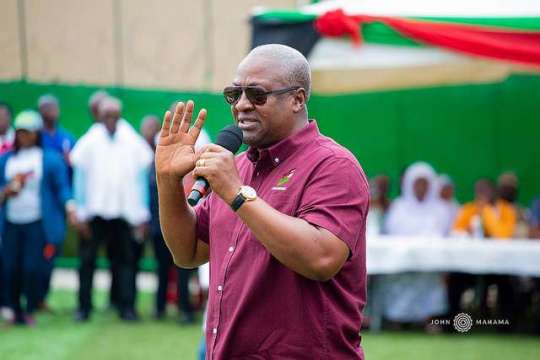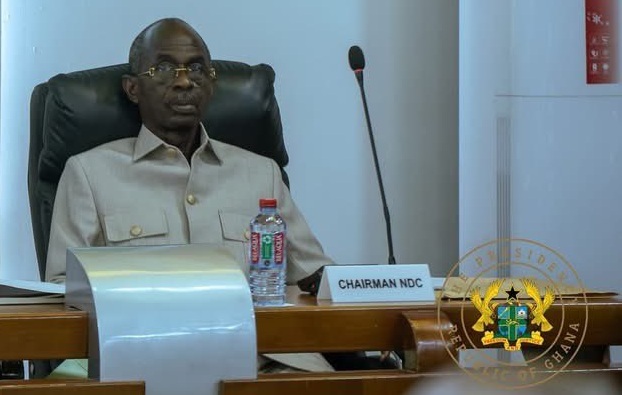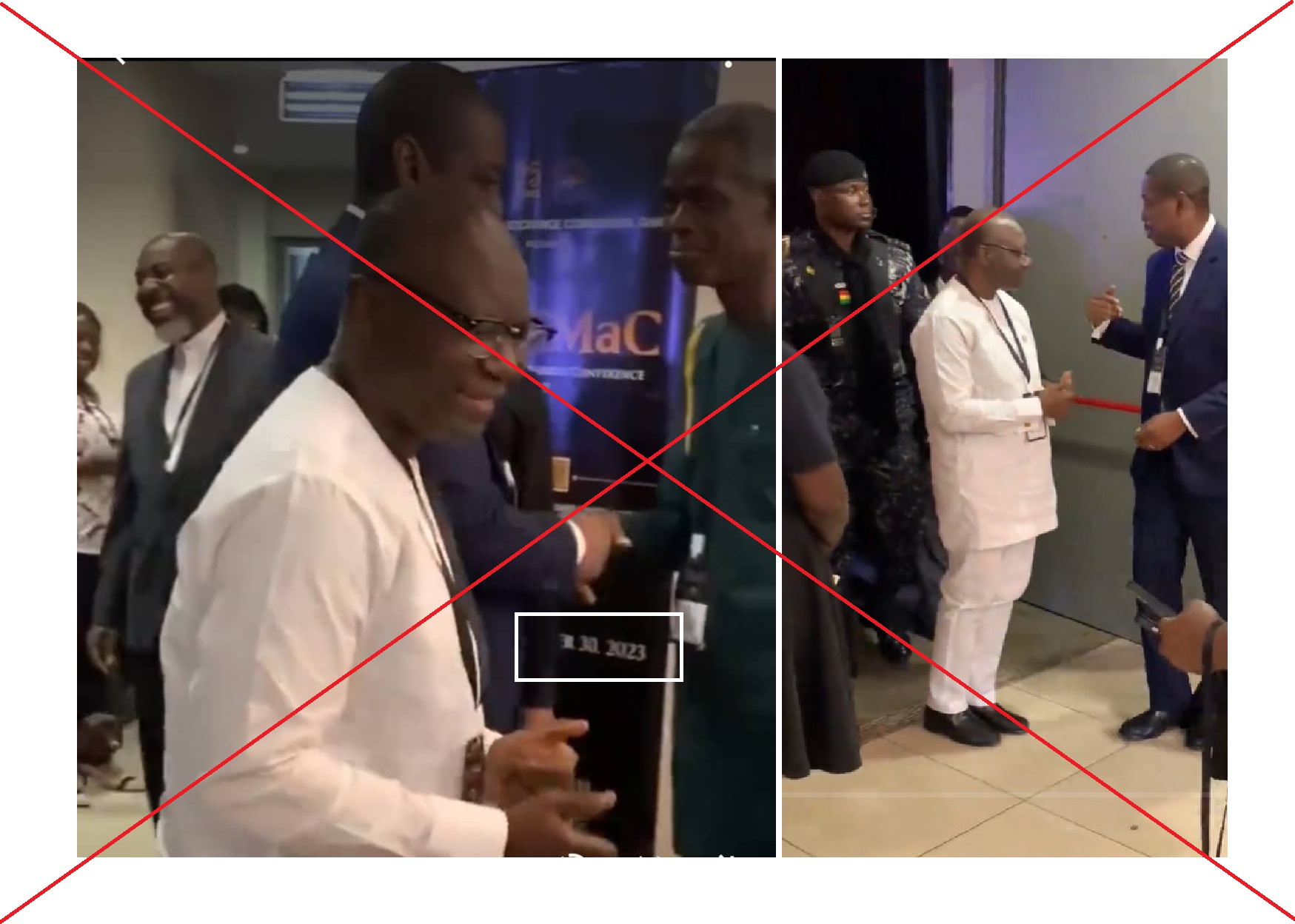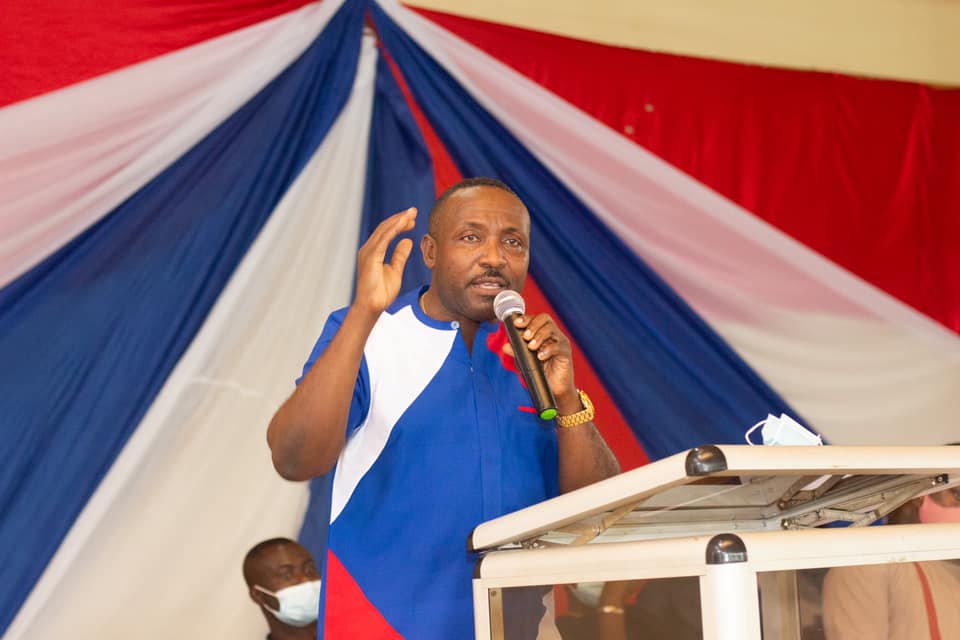Claim: Some economic indicators were better under the former government
Source: John Dramani Mahama
Verdict: 2 FALSE
Researched by Sedem Kwasigah
The flagbearer of the National Democratic Congress (NDC), John Dramani Mahama, has embarked on a regional tour to outdoor his plans for the country when elected president in the upcoming elections.
During an engagement with residents of Tamale in the Northern region on February 5, 2024, he made some claims about the country’s economic difficulties which we would verify in this report.
Claim 1
“Today, the debt to GDP is more than 100%. It means if you take all of Ghana’s GDP and you turn it into money, you will use it to pay all our debts and still owe 3 per cent. Our debt to GDP was 57%, and the optimum GDP for middle-income countries that [is] recommended by the IMF is 60%. So, we were even under the recommended debt to GDP” (1:55:22-1:55:58)
Fact-check
This claim will be fact-checked using data from the 2017 Annual Debt Management Report of the Ministry of Finance and Economic Planning.
“Finally, the total public debt as a percentage of GDP declined from 73.1 percent in 2016 to a provisional figure of 69.8 percent in 2017 as shown in Table 2.1. In nominal terms, the public debt stock stood at GH¢142.5 billion as at end 2017, compared to GH¢122.3 billion in 2016,” page 12, point 17 of the report stated.
This indicates that at the end of 2016, when John Dramani Mahama left office, the debt to GDP was 73.1 per cent and not 57 per cent as he claimed.
This corresponded with the data from the International Monetary Fund (IMF).
“In 2016, the overall fiscal deficit (on a cash basis) deteriorated to an estimated 9 percent of GDP, instead of declining to 5¼ percent of GDP as envisaged under the IMF-supported program. The large deviation was mainly due to poor oil and non-oil revenue performance and large expenditure overruns. As a result, the government debt-to-GDP ratio increased further to close to 74 percent of GDP at end-2016,” the report said.
“Total public debt has increased by 1 percentage point to 73.9 percent of GDP in 2016, around 3.5 percentage points higher than projected in the previous DSA,” said an IMF report.
Verdict
The claim that the debt to GDP ratio was 57% when John Mahama left office is false.
Claim 2
“When we left office, the budget deficit was 6.6%. Today the budget deficit, it even went to 15% it has now started dropping” (1:55:55-1:56:10)
Fact-check
The August 2017 International Monetary Fund report on “Ghana Debt Sustainability Analysis” indicated that Ghana’s fiscal deficit at the end of 2016 was 9.3%.
“The cash-based fiscal deficit turned out at 9.3 percent of GDP in 2016 relative to the program target of 5.2 percent of GDP, reflecting broad-based revenue underperformance and significant expenditure overruns.”
“Progress on the macroeconomic stabilization program implemented since April 2015 has been uneven. On the one hand, the fiscal deficit remained high at 9.3 percent of GDP in 2016—well above the target of 5.2 percent— leading to additional debt accumulation and an increase in interest costs.”
In the 2017 Mid-Year Fiscal Policy Review, the Minister of Finance and Economic Planning, Ken Ofori Atta, reported the budget deficit of the 2017 budget presented by the previous administration to be 9.3% and not 6.6%, as the former president claimed.
“Mr. Speaker, on the fiscal front, updated information shows that the end-2016 fiscal deficit was worse than previously estimated, at 9.3 percent of GDP compared to the provisional figure of 8.7 percent of GDP on cash basis at the time of presenting the 2017 Budget.” the document said on page 7, point 14.
Verdict
The claim that the budget deficit was 6.6% when President Mahama left office is false.













